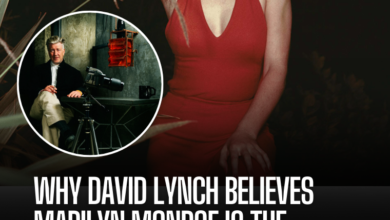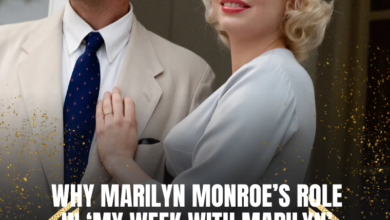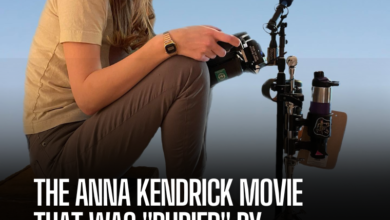Audrey Hepburn’s Emotional Journey in ‘My Fair Lady’: Battling Self-Doubt and a Dubbing Controversy
OPINION: This article may contain commentary which reflects the author's opinion.
Audrey Hepburn’s iconic performance as Eliza Doolittle in My Fair Lady (1964) is remembered as one of the shining moments of her illustrious career. The film, based on George Bernard Shaw’s Pygmalion, tells the story of a Cockney flower seller transformed into a refined lady by phonetics professor Henry Higgins, played by Rex Harrison. Directed by George Cukor, My Fair Lady became an instant classic, winning eight Academy Awards, including Best Picture. However, the path to success was not without its challenges, particularly for Hepburn herself, who faced a number of difficulties in bringing the character to life.
The Struggles with Singing and Self-Doubt
One of the most significant challenges Hepburn faced during the making of My Fair Lady was her singing. Despite her undeniable talent, Hepburn was not able to provide the vocals for most of the songs in the film. According to historical accounts, including a SlashFilm article on Hepburn’s dubbing, she was disappointed to learn that her singing voice would be replaced by the professional vocals of Marni Nixon. Hepburn, who had long hoped to use her own voice, expressed frustration with the process, famously saying, “Oh darn, I think I can do better. Maybe I can’t.”
This internal conflict between Hepburn’s desire to showcase her vocal abilities and the reality of the dubbing process reflected a deeper emotional struggle. Although she did perform the vocals for the song “Just You Wait,” most of the songs—particularly those after Eliza’s transformation—were dubbed by Nixon to create the posher, more refined sound that the role required. Hepburn’s working-class, raw voice was seen as more fitting for the pre-transformation Eliza, while Nixon’s polished voice reflected the character’s metamorphosis into a lady of society.
Despite her frustration, Hepburn’s competitive nature and determination were evident as she sneaked into the sound stage after Nixon’s dubbing sessions in an attempt to improve her own singing voice. This lesser-known side of Hepburn’s personality—her drive to improve and her dissatisfaction with the limitations of her performance—reveals her fierce commitment to delivering the best possible portrayal.
Casting Controversy and Accent Struggles
Hepburn’s casting in My Fair Lady was the subject of considerable controversy. Many believed that she was miscast as Eliza Doolittle, particularly given the role’s association with the brash, working-class Cockney accent. Some critics, including those cited in Roger Ebert’s review of the film, felt that Hepburn’s version of Eliza leaned too heavily into a panto-Cockney accent, which added to the pressure she felt during the performance. This accent challenge further complicated her portrayal, as she had to balance the working-class roughness of Eliza with the sophistication that Higgins intended to mold her into.
Moreover, Hepburn’s casting over Julie Andrews, who had originated the role on stage, sparked debate in the public sphere. The decision was viewed by some as a snub to Andrews, whose stage performance had earned her widespread acclaim. This controversy likely added external pressure on Hepburn, who had already been under intense scrutiny due to the high expectations for the film and her status as a major Hollywood star. As detailed in articles from Express.co.uk, this public backlash created an additional layer of stress for Hepburn, though she rarely commented on it directly.
Professionalism in the Face of Adversity
Despite the difficulties, Hepburn’s professionalism and grace shone through during the production of My Fair Lady. The film’s director, George Cukor, was known for his calm demeanor on set, and while Hepburn did not openly discuss challenges with him, her reflections on the process focus more on her own performance struggles rather than interpersonal conflicts with the director. She remained dedicated to her craft and worked diligently to bring Eliza Doolittle to life, even if it meant stepping back and allowing Nixon to take over certain aspects of the role.
Interestingly, Hepburn’s reflections on her vocal challenges contrast with the public image she often cultivated as a graceful and poised star. Behind the scenes, she wrestled with self-doubt and a desire to reclaim her place in the film’s vocal performance, showing a more competitive and determined side to her personality that was not immediately visible on screen.
Legacy and Reflections on My Fair Lady
My Fair Lady remains a cultural touchstone, celebrated for its stunning performances, lavish costumes, and memorable music. Hepburn’s portrayal of Eliza Doolittle—despite the challenges she faced—is still regarded as one of her most iconic roles. The film’s success, which includes being preserved in the National Film Registry, attests to its enduring significance in cinema history.
However, Hepburn’s experience filming My Fair Lady sheds light on the personal and professional challenges that often accompany iconic roles. From the vocal struggles and self-doubt to the controversies surrounding her casting, Hepburn’s journey through the making of the film was marked by resilience, determination, and a commitment to her craft. These lesser-known aspects of her experience further enrich her legacy as one of Hollywood’s most beloved and multi-dimensional stars.
Her challenges during the production of My Fair Lady serve as a testament to her depth as both an actress and an artist, offering a glimpse into the emotional and professional hurdles that shaped her career and ultimately contributed to the film’s lasting impact on cinema.



